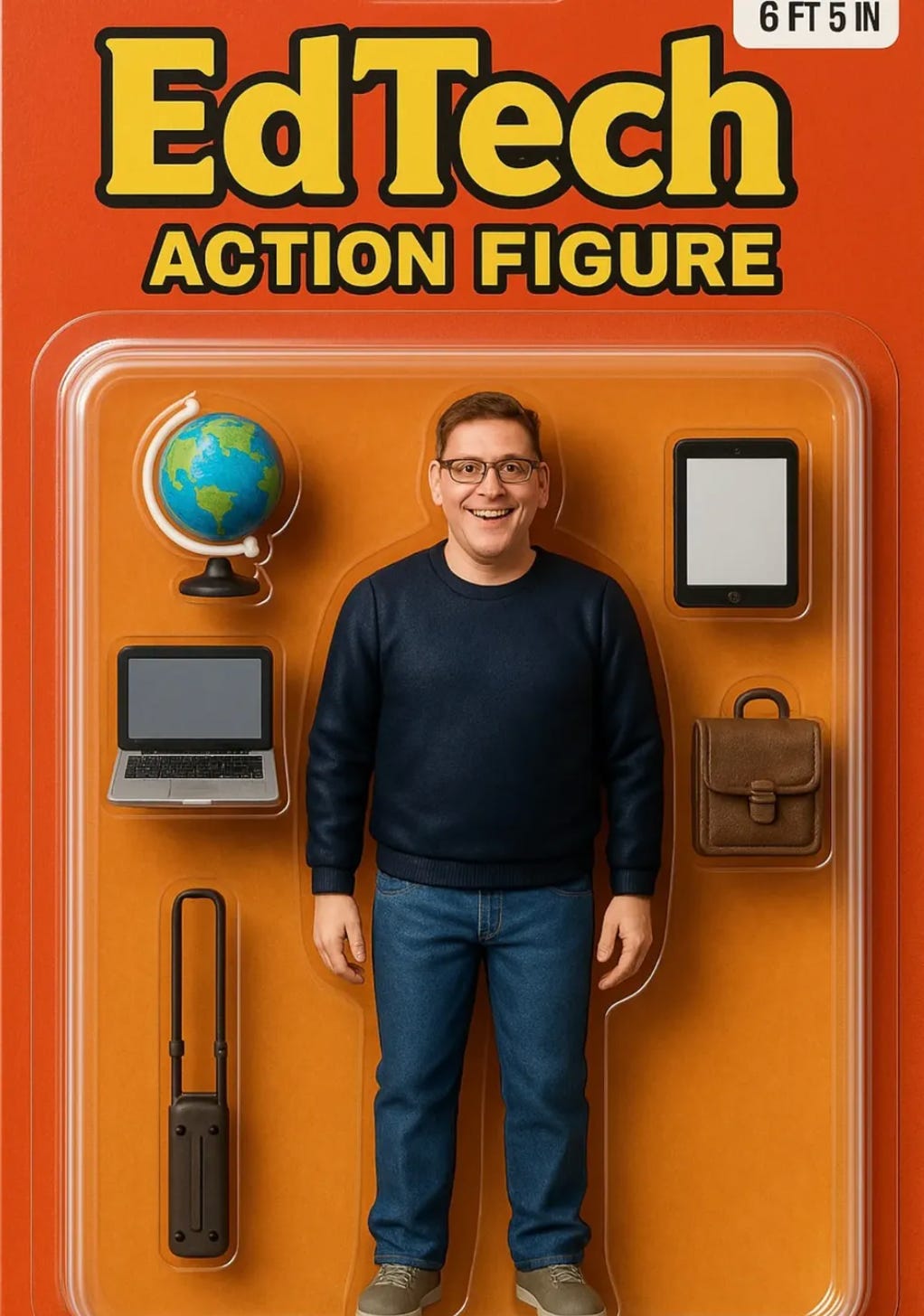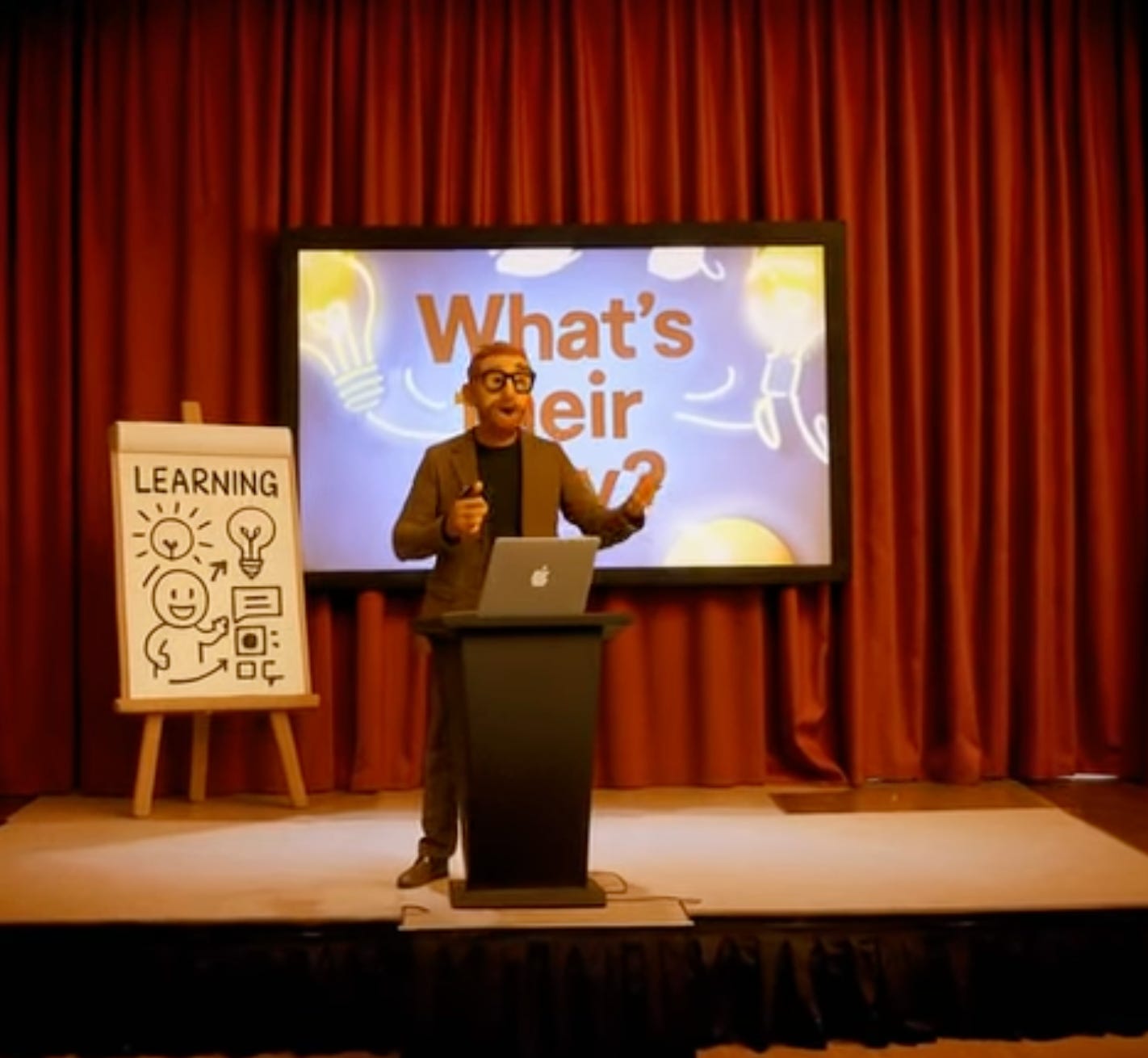Ranga's Take on AI action figures
What the recent trend teaches us about the importance of play.
If there's one thing I keep banging the drum about, it's the profound, often underestimated power of play in how we learn and grow. It's not just about giggles and make-believe; it's the very engine of exploration, creativity, and understanding.
Lately, something rather unexpected has been throwing this truth into sharp focus: the explosion of AI-generated doll and action figure images.
Across social media, we're seeing these incredibly detailed, often fantastical renderings of toys. Whether it's a hyper-realistic Barbie embarking on an intergalactic adventure, a gritty action figure facing down mythical beasts, or a teacher showing off their latest funky planner, Stanley cup and laptop, these images tap into something deeply ingrained in us – the desire to imagine, to create narratives, to play.
Now, some of you might be thinking, "what on earth do AI-generated toys have to do with serious learning?" Well, everything. These AI creations are a digital echo of the fundamental human drive to engage with the world through playful interaction. Children (and let's be honest, plenty of adults) learn by manipulating objects, by inventing stories around them, by testing boundaries within the safe confines of their imagination. A doll isn't just a toy; it's a character in a self-directed drama, a tool for understanding social roles, emotions, and consequences. An action figure isn't just a poseable form; it's a hero, a villain, a catalyst for epic tales of courage and conflict.
These AI images, while virtual, ignite that same spark. They allow us to visualize possibilities, to engage in imaginative "what ifs." They become prompts for our own internal play, triggering memories of childhood games and inspiring new, albeit digital, scenarios.
Interestingly, this very phenomenon – this seemingly harmless exploration of play through AI – also highlights a familiar pattern in how we react to new technologies. AI, with its rapid advancements and sometimes unsettling capabilities, has become a lightning rod for anxieties. It’s an easy target for those resistant to change, and predictable arguments about energy consumption and sustainability quickly surface. "Look at all that processing power just to make toy pictures!" the naysayers cry.
And while concerns about the environmental impact of technology are valid and deserve serious consideration, focusing solely on the perceived frivolousness of AI-generated images risks missing the bigger picture. It's like criticizing the invention of the printing press because someone used it to print playing cards. The technology itself is a tool, and its applications, even the seemingly lighthearted ones, can offer profound insights into our fundamental human needs and desires.
The popularity of these AI toy images isn't just a fleeting trend; it's a testament to the enduring power of play. It's a reminder that our brains are wired to learn through exploration, experimentation, and imaginative engagement. Even in the age of sophisticated algorithms and complex neural networks, the simple act of conjuring a fantastical toy resonates deeply because it connects with a core element of what makes us human – our innate capacity for play.
So, the next time you scroll past one of these AI-generated wonders, take a moment to appreciate it for more than just a pretty picture. See it as a digital artifact that reflects our enduring need to play, to imagine, and to learn through the boundless landscape of our own minds. And perhaps, let it be a gentle nudge to re-evaluate how we prioritize and nurture play in our own lives and the lives of those around us.
Play affords us all those all important low stakes opportunities to test the waters.
Stay curious,
Daren.



